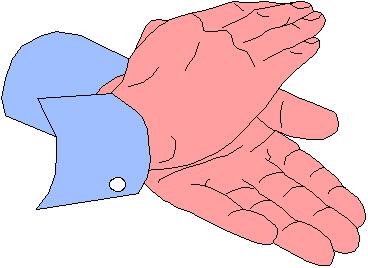
MY TWO CENTS WORTH (& more)
BE SURE YOU HAVE READ CHAPTER TEN THOROUGHLY BEFORE GOING ANY FURTHER!
I thought that, by this point in the course, you might be tired of the same old thing - look at a picture, read the text, go to a couple of links. So, I inserted a practice test here. These questions are mostly taken from the student study guide, which, I understand, the publisher is MONTHS late in shipping.
The answers are at the bottom of this page, but try to
answer them before looking to see how well you understood this chapter.
1. The tendency, during late childhood and early adolescence, of children to associate with others of the same sex is called. ______________.
2. Which of the following functions is performed by peer groups?
a) Peer groups give children experience with relationships in which they are on an equal footing with others.One possible explanation given in your textbook for children to segregate themselves by gender is that boys and girls behave differently in middle childhood and are thus more comfortable with others of the same gender, who "act like them". Identify each of the following as more characteristic of boys or of girls.
b) Peer groups help teach children that they must subordinate group goals to their own interests.
c) Peer groups provide an arena in which children cannot be independent of adult control.
d) Peer groups provide children with marginal stress.
3. Are more likely to interrupt one another.
4. Use commands and threats more often.
5. More often provide non-verbal signals of attentiveness
to conversations.
6. Tell more jokes.

MY TWO CENTS WORTH (& more) |
I am rather skeptical of this explanation, because, if this is the reason, then why do adolescents start associating with members of the opposite sex? It seems to me that males and females at 17 or 27 or not any more similar than they are at 12. So, why do these differences no longer bother us? Does our improving social cognition enable us to accept and appreciate others' differences? Does our hormonally-induced desire to have sex with the other gender overcome our previous discomfort with their behavior? It seems to me that a more plausible explanation for gender cleavage might be that we as a society encourage boys and girls in different activities, and we reinforce their associating with members of the same sex. |
7. According to Eleanor Maccoby, I am all wrong because:
a) Boys actively seek out girls as playmates, but the
girls reject them because their behavior is annoying.
b) Children systematically frustrate adult efforts to
diffuse their preferences for interacting with peers of the same gender.
c) Behavior of boys and girls during middle childhood
is pretty much the same, when examined in an unbiased manner.
d) All of the above are supported by her research.
![]()
This is a survey course. That means it is supposed to give you a broad look at the field of developmental psychology. Your term papers (you ARE working on your term paper, aren't you?) and book review (remember that) give you the opportunity to look at a couple of topics in depth. Anyway, in keeping with the spirit of a survery course, below, for you to check out are links to....
A FEW MORE, BRIEF TOPICS ON MIDDLE CHILDHOOD
A little bit more on children's friendships
Sibling rivalry in middle childhood
Child Abuse--- There are hundreds of pages of worthwhile information on the web. In consideration of your limited time, I just picked two.
![]()
SELF-QUIZ Answers
1. Gender cleavage
2. a.
3. boys
4. boys
5. girls
6. boys
7. b
 |
CONGRATULATIONS!! YOU HAVE FINISHED THE FIRST HALF
OF THE COURSE.
See Robin Kleese in Student Support Services to pick up a copy of the midterm. Or, if you have access to a fax machine, email me your number and I will fax you a copy. I can also email you a copy, if you would prefer. |
Click here to return to the previous page on children's grief